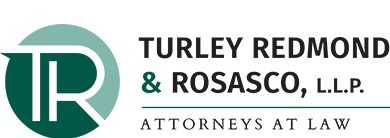If you don’t look out for your safety at work, who will?
Regardless of the industry in which you earn your income, your safety and health could be at risk. Workplace accidents can occur anywhere and at any time – and, in spite of your best efforts, you might become a victim through no fault of your own. While you have to cope with pain and anxiety about lost wages, you will likely have many questions about workers’ compensation benefits such as what procedures should you follow and which losses will the benefits cover?
Fortunately, you are entitled to retain the services of an experienced workers’ compensation attorney who can handle all the intricacies of filing benefits claims with the workers’ comp system. The support and guidance of such a professional will allow you to recover and return to work while he or she represents you at the administrative hearing before the New York State Workers’ Compensation Board and negotiates a settlement with your employer and the insurance company.
Common workplace hazards
Although it is the responsibility of your employer to protect your safety and health at all times, not all business owners prioritize workplace safety. Here are some common workplace hazards for which you might want to keep a look out:
- Working at heights — The Occupational Safety and Health Administration has strict safety regulations to prevent falls, but a lack of understanding could lead to severe injuries or worse. Although it seems inconceivable, some employers are unaware of the requirement to provide fall protection along with having clearly written instructions that indicate how to properly wear a fall harness and how and where to hook it up securely.
- Negligent housekeeping — Clutter and spills can cause slip or trip and fall accidents that might result in injuries as serious as TBI, and careless stacking in a warehouse can cause inventory collapses that may be deadly. Blocking fire extinguishers, electrical boxes and emergency exits can also have dreadful consequences.
- Extension cords — Using extension cords to provide electricity is only acceptable if it is a temporary fix — very temporary. If the floors of industrial facilities have extension cords running in all different directions, it could create a fire hazard due to the wires overheating. Foot traffic along with forklifts running back and forth can perish insulation that might cause electric shock hazards.
- Lift trucks — Some safety advisors believe work pressure is the biggest risk when it comes to forklifts. Performance based on production often cause operators to rush and disregard safety regulations.
- Lockout and tagout procedures — Having the most state-of-the-art safety procedures to prevent contact with dangerous moving parts of machines will serve no purpose without enforcement. Complacency, unfamiliarity, lack of proper training and a rush to get work done quickly have all been found to cause fatalities in industrial facilities.
- Chemical hazards – Employers need to always ensure that any and all chemicals are safely stored, properly labeled and only used for their prescribed purposes. Complying with expiry dates and knowing which leftover chemicals to discard is vital. For example, a small amount of ether can turn into explosive peroxide after the expiry date. Transferring chemicals from one container to another could also have devastating consequences.
- Confined spaces — These areas are only safe after risk assessment and obtaining the proper permits. Failure to follow the required steps can result in uninformed workers entering areas where toxic fumes can cause instant death.
Being aware of potential hazards could help you avoid serious injuries. However, workers’ compensation benefits are available, regardless of who was at fault. Furthermore, if you suffer injuries as the result of a third party’s negligence, your attorney may find grounds for a civil personal injury claim that could provide additional compensation.

